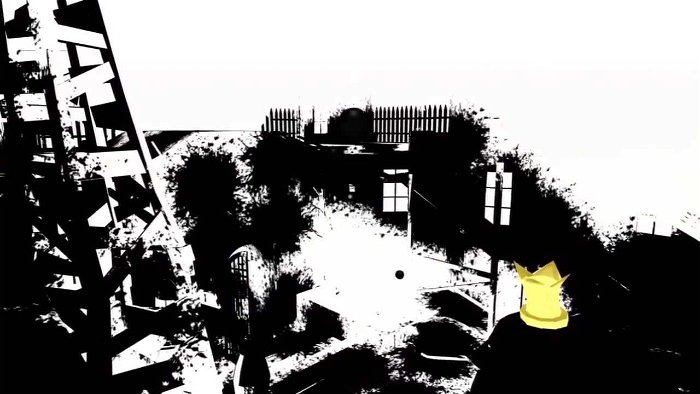
I spent this past week playing both MachineGames’ Wolfenstein: The Old Blood and Giant Sparrow’s The Unfinished Swan. Though the two games could hardly seem more different—one is about gruesomely mowing down waves of alternate history Nazis while the other features a small boy splashing paint around a storybook world—they share a genre in the first-person shooter. It may be hard to remember this at first. The sort of associations conjured up by the shooter typically involve blood, machineguns, and explosions, but, in The Unfinished Swan, the most violent moments involve splattering balloons so they gently float off into the sky.
All the same, the fact that The Unfinished Swan’s primary gameplay mechanic is shooting globs of paint is important. It means that, even as different as it looks from other shooters, it still comfortably fits within the genre. The moment to moment play involves aiming a reticule at different areas in the world and pulling back on the trigger to shoot projectiles into the environment. Most of the levels are impossible to navigate on their own—there’s often no visible geometry to orient the player—until paint is shot onto surfaces, colouring them in and revealing the hidden dimensions of the world. In order to progress through The Unfinished Swan’s chapters, it’s necessary to perform the same kind of actions that fill a more traditional genre title like The Old Blood. Though the protagonist isn’t being attacked by enemies, the player must still guide him to safety by keeping their trigger finger sharp, ready to fire at appropriate targets.
In most shooters the point of aiming and firing the gun is to make obstacles disappear. These obstacles may include human or monster enemies, vehicles, or environmental objects like the explosion-prone red barrels littering so many games. The player lines up their sights and pulls a trigger in order to take things away. Largely, the shooter player’s only real interaction with the game environment is removing or destroying elements of it. What Giant Sparrow does with The Unfinished Swan is flip this convention on its head.
The ability to throw paint is fundamentally a creative act. Press one of the controller’s shoulder buttons and the world takes on new dimensions, the act of shooting adding to what exists in the environment rather than taking away from it. In the early parts of the game this involves revealing walls, pathways, and stairwells by firing paint at them. Though they were always there, it’s only by making them visible through shooting that they are “created” in the game world. This same creative act becomes even more literal during a section of levels that task the player with spraying blue, watery-looking paint onto budding plants in order to help climbable vines spread across the environment. In order to get up a high wall or bypass a large gap between buildings, the player actually adds to the level by shooting helpful objects into existence.

Even the few run-ins with monsters featured in the game are solved by creating. In a series of chapters where the protagonist must move through an almost pitch-black forest, the player shoots paint at streetlamp-like objects or propels an illuminated balloon down a river in order to reduce the darkness and cause the strange, spider enemies that attack him to flee from the light. Instead of blasting them away with bullets, the player can only make the creatures retreat by, again, adding new features to the environment.
The possibilities inherent to this kind of approach to the shooter are nearly limitless. So much of what can make the genre feel stale is the assumption that every game of its kind must use its mechanics to provide exactly the kind of “destructive” (or “subtractive”) interactions that have served as the default for such a long time. When the shooter is considered in a different way, we get games that feel incredibly novel. Valve Corporation’s Portal series, while more interested in asking players to think out the solutions to puzzles than engage in the sort of shooting that fills The Unfinished Swan, is another example of what’s possible when a developer considers the genre from a different angle. If others follow in this vein—choosing to consider the potential of a more creative breed of shooter—the resulting games could be some of the most unique we’ll ever play.




